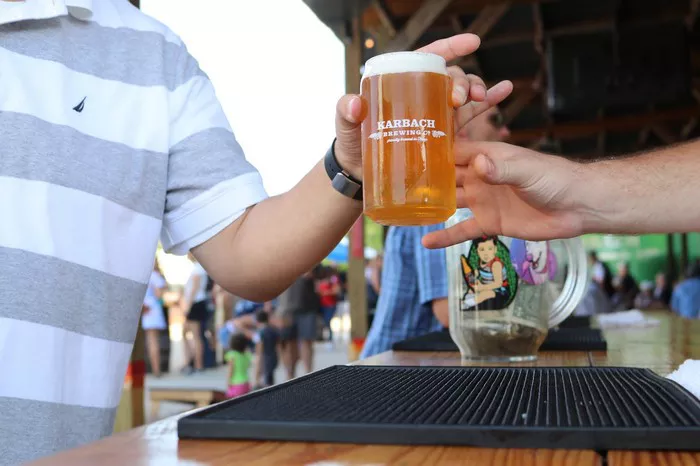A colonoscopy is a medical procedure where a doctor examines the inner lining of your large intestine (rectum and colon) using a thin, flexible tube called a colonoscope. Post-procedure care is crucial for recovery and to avoid complications. Many patients wonder if they can resume drinking beer after a colonoscopy. To provide a comprehensive answer, it’s essential to delve into the various aspects of beer, including its brewing process, ingredients, nitrogen dispensement, flavor profile, historical background, health benefits, and cultural impact.
Brewing Process
Beer is brewed through a meticulous process that involves several key steps. It begins with malting, where grains (usually barley) are soaked in water, germinated, and then dried. The malted barley is then mashed, mixed with hot water to convert the starches into fermentable sugars. This mash is then boiled, and hops are added for bitterness, flavor, and aroma. After boiling, the wort is cooled and yeast is added to start fermentation. The fermentation process can take several days to weeks, depending on the type of beer. After fermentation, the beer is conditioned, filtered, and packaged.
Ingredients
The primary ingredients in beer are water, malted barley, hops, and yeast. Water makes up the majority of beer and its quality can significantly affect the taste. Malted barley is the source of fermentable sugars and gives beer its color and sweetness. Hops add bitterness to balance the sweetness of the malt and provide aromatic compounds. Yeast is the microorganism that ferments the sugars, producing alcohol and carbon dioxide. Other ingredients, such as adjunct grains (like corn or rice), fruits, spices, and additional flavorings, can also be used to create different styles and flavors of beer.
Nitrogen Dispensement
Some beers, particularly stouts and ales, are dispensed using nitrogen gas instead of the more common carbon dioxide. Nitrogen-dispensed beers have smaller bubbles, which create a smoother, creamier mouthfeel and a dense, long-lasting head. This method of dispensement can influence the overall drinking experience, making it distinct from traditionally carbonated beers.
Flavor Profile
The flavor profile of beer is influenced by its ingredients and brewing process. Beers can range from light and crisp lagers to dark and robust stouts. The malt contributes sweetness and flavors such as caramel, toffee, and chocolate, while hops can add bitterness, floral, citrus, or piney notes. Yeast also plays a crucial role, especially in styles like Belgian ales, where it can impart fruity and spicy flavors. The balance of these flavors determines the overall taste of the beer.
Historical Background
Beer is one of the oldest beverages in the world, with a history dating back to at least the 5th millennium BC in Iran. It was a staple in ancient civilizations like Egypt and Mesopotamia, where it was used not just for consumption but also in religious ceremonies and as a form of currency. Over the centuries, beer brewing has evolved significantly, with major contributions from medieval European monasteries, which refined brewing techniques and introduced hops as a preservative and flavoring agent.
Health Benefits
Moderate beer consumption has been associated with certain health benefits. Beer contains vitamins (such as B vitamins), minerals, antioxidants, and dietary fiber. Studies have suggested that moderate beer consumption may help improve cardiovascular health, increase bone density, and reduce the risk of certain diseases. However, excessive drinking can negate these benefits and lead to serious health problems, including liver disease, addiction, and increased cancer risk.
Cultural Impact
Beer has a profound cultural impact globally. It is central to many social traditions, celebrations, and rituals. Festivals like Oktoberfest in Germany and the Great American Beer Festival in the United States celebrate the diversity and heritage of beer. Additionally, the craft beer movement has revitalized interest in traditional brewing methods and local ingredients, fostering a sense of community and innovation within the industry.
Can I Drink Beer After a Colonoscopy?
While understanding the intricacies of beer enhances appreciation for this ancient beverage, the primary concern post-colonoscopy is your health and recovery. After a colonoscopy, it’s advisable to avoid alcohol for at least 24 hours. This precaution is because the sedatives used during the procedure can interact with alcohol, potentially causing adverse effects like increased sedation, dehydration, and impaired judgment. Additionally, your digestive system needs time to recover, and alcohol can be irritating to the gastrointestinal tract.
In Conclusion
While beer has a rich history, complex brewing process, and numerous cultural and potential health benefits, it’s essential to prioritize your health post-colonoscopy. Wait at least a day before enjoying your favorite brew to ensure a smooth and safe recovery.


